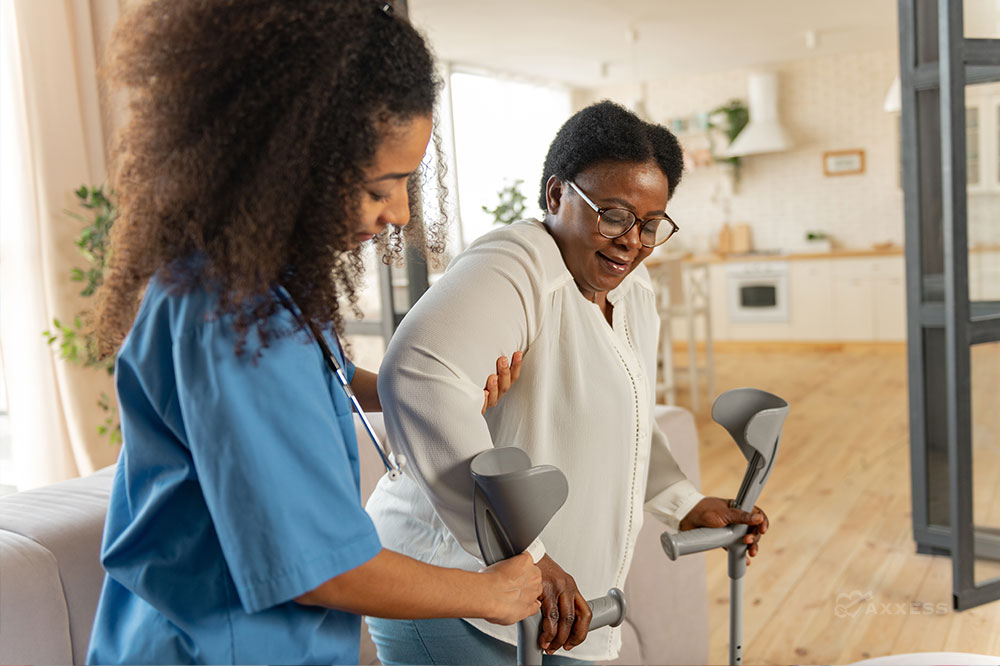
The Centers for Medicare and Medicaid Services (CMS) created the Home Health Value-Based Purchasing (HHVBP) Model in 2016 to improve efficiency and quality in home health services and ensure the appropriate patients receive this care. Measuring baseline performance began in 2023. In 2025, providers will see a 5% increase or decrease in their reimbursement based on their performance relative to the baseline numbers.
To help organizations receive maximum payment for the services they provide, Axxess created a one-page reference guide that highlights common VBP risks and tips for success.
Arlene Maxim, RN, HCS-C, Senior Vice President of Clinical Services at Axxess, authored the reference guide and explained the strategies she recommends implementing to optimize VBP performance.
“The measurement and reporting of value-based care (VBC) in the home care industry is a benefit to us all,” Maxim said. “Having the ability to analyze and measure outcomes gives us the opportunity to show our value. But many organizations are still taking risks that could harm their VBP performance and ultimately their bottom line.”
Risk: Not looking at individual Interim Performance Reports (IPRs)
CMS has expressed deep concern about the lack of attention providers are giving to their IPRs.
“The IPR is an important tool for organizations to understand where they stand and track their performance against peers in their cohort,” Maxim said. “It enables organizations to analyze areas of the VBC requirement where they’re struggling. Using these tools provided by CMS helps organizations target areas needing improvement to optimize outcomes and payment.”
Maxim outlines the following best practices for leveraging IPRs to optimize VBP performance:
- Review and analyze IPRs as they become available.
- Use the guidance CMS provides to interpret the results.
- Integrate areas with low scoring into your QAPI program.
- Determine what structural, policy and/or procedural changes need to take place for improvement.
- Prioritize additional OASIS-E training in areas being measured to move the scoring forward.
Risk: Not believing VBP will actually happen
Many organizations believe CMS is not serious and will delay the implementation of VBP.
“VBP will happen,” Maxim said. “Organizations that do not believe this should deepen their knowledge using the resources CMS provides. According to the FAQs published, payment adjustments will be made to the Home Health Prospective Payment System (HH PPS) final claim payment amount. For example, if a final claim amount is $3,500 and the payment adjustment percentage is 1.018%, the payment adjustment would be $3,500 multiplied by 0.01018, which equals an additional $35.63 included in the payment.”
Risk: Lack of OASIS item improvement at discharge
Performance on the following OASIS items accounts for 35% of an organization’s final VBP score:
- Improvement in Dyspnea
- Discharged to Community
- Improvement in Management of Oral Medications
- Total Normalized Composite Change in Self-Care
- Total Normalized Composite Change in Mobility
“Failing to improve these items at discharge can take a heavy toll on an organization’s VBP scoring,” Maxim said.
She recommends training programs like the Axxess Training and Certification+ platform to keep staff up to date on best practices for documenting VBP-related OASIS items.
Risk: Ignoring the importance of information in discharge assessments
While the start of care assessment establishes payment and the baseline to build an individualized plan of care, the discharge assessment will determine scoring for VBP.
“Organizations should adopt the philosophy that discharge starts at admission,” Maxim said. “We have always known that, but often do not practice it.”
She recommends the following best practices for preparing for and completing discharge assessments:
- Remind patients frequently that they will be discharged and how to prepare.
- Have a team meeting with family and other team members involved in the patient’s care at least two weeks prior to discharge. If any members of the patient’s care team cannot be physically present, use technology to connect them virtually.
- The day of discharge, make sure the patient has transportation for future physician appointments, pharmacy trips, etc., and ensure their post-home-care visits are scheduled.
- Adopt a format similar to the IDEAL discharges used by many hospitals.
To download Maxim’s resource guide on value-based purchasing risks and tips, click here.
Axxess Home Health, a cloud-based home health software, streamlines OASIS and discharge documentation so organizations can position themselves for lasting success in the VBP environment.
